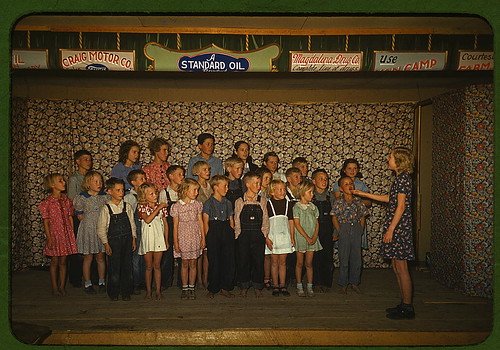How were we going to meet people and make friends if there was no one around?

If my kids had attended school, their community would have been defined primarily by where they lived. In contrast, as I commuted to distant towns to meet with homeschoolers for group activities and field trips, I observed that town boundaries mattered far less to us than shared interests.
It seems we were part of a trend. A 2006 report from the Pew Internet and American Life Project, "The Strength of Internet Ties," describes similar changes in the way Americans in general have begun to view their communities:
"Instead of disappearing, people’s communities are transforming: The traditional human orientation to neighborhood- and village-based groups is moving towards communities that are oriented around geographically dispersed social networks. People communicate and maneuver in these networks rather than being bound up in one solitary community."As a home educator, I knew I was not without a community. There were thousands of homeschoolers in New Hampshire, and over a million in the United States (according to this data from the U.S. Dept. of Education). It was just that, instead of being confined to one town, my community was scattered across the state and around the world. So, how was I to get involved?
Fortunately, my friend who homeschooled had lots of other friends who homeschooled, so she was my life raft at first. Luckily for me, she was energetic, enthusiastic, and generous with her time. She set up weekly activities at her town's recreation center and invited those new to homeschooling to join a core group of experienced homeschoolers.
Our children were not the same ages, but it didn't matter. Kids of all different ages mingled, and most of the time the older ones found ways to include the younger ones. As for the parents, we swapped ideas and got acquainted. Our reasons for homeschooling varied: some chose the lifestyle for religious reasons, others for academic, social, or philosophical reasons. Our methods were diverse, too. Curriculum ideas were shared freely, but no one felt pressured to adopt a particular approach. Instead, the community formed around a single, unifying interest: home education. The group was open to all and very welcoming, and for that, I was extremely grateful.

Things have changed so much since 1997 that it's hard to recall how much effort it once took to establish a network of homeschooling friends. Email and, more recently, social networks have replaced phone trees and mailing lists, much to my delight. Paper newsletters have become obsolete, supplanted first by electronic versions and then by websites and blogs. Meetings are now easy to arrange but less essential as information about classes and activities is distributed online, and posted questions can receive immediate answers—often from more than one person.
If someone had asked me a few years ago about the impact of the internet on homeschooling communities, I would have described the connections I've been able to make and sustain that I never would have had otherwise. I would have noted how much more efficiently I can find and share information, how much easier it is to organize and attend events. I can even "talk" to homeschoolers on the other side of the world. Essentially, I would have confirmed the findings presented in the Pew report, which states:
"The internet and email play an important role in maintaining these dispersed social networks. Rather than conflicting with people’s community ties, we find that the internet fits seamlessly with in-person and phone encounters. With the help of the internet, people are able to maintain active contact with sizable social networks, even though many of the people in those networks do not live nearby" ("The Strength of Internet Ties").Certainly, something has been gained from all these changes, but lately I wonder, has something also been lost? It seems as though homeschoolers who have access to extended virtual communities are less likely to get together regularly, in person, with local homeschoolers. We've grown fussier about who we want to include in our "networks": I often hear homeschoolers asking where they can meet "secular homeschoolers who use the Charlotte Mason method" or "unschooling Christians who like to ski." Instead of banding together with all kinds of homeschoolers simply because they live nearby, people seem to be seeking a perfect match for themselves.
I get it. If you can find people who share your values and educational preferences, it's easier to get helpful recommendations for good resources and you're probably more likely to become friends. The trouble is that it's so very easy to seek like-minded friends online and so much harder to establish connections with our dissimilar neighbors.
When I think back on the first time I attended a homeschool meeting, I remember how nervous I felt. I spent days talking myself into going. It was daunting to meet in person with a group of strangers who had practically nothing in common other than homeschooling. But then, it was also extraordinary to look into their eyes and realize we all shared a powerful need to connect with others who were facing similar challenges. Vulnerability is hard to see in an email message, but it's nearly impossible to miss when you are face to face.
No comments:
Post a Comment